For as long as I can remember, my father carved model oars in the living room. They were about a foot long, whittled from fine-grained Alaska yellow cedar and sanded silky smooth. He painted the blades with the colors of the crews he coached, and gave the oars out as prizes after rowing regattas. Standing upright in mahogany bases, they were objets d’art. The looms taper to the grips to allow the use of closed oarlocks.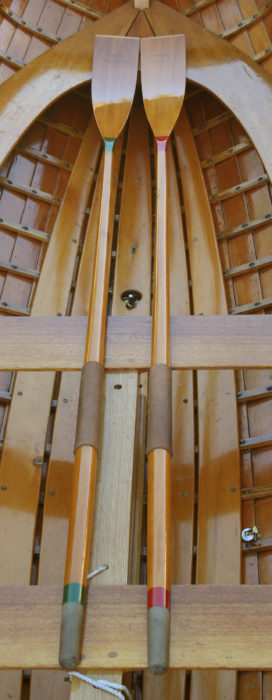 photographs by the author
photographs by the author
Join The Conversation
We welcome your comments about this article. To include a photo with your remarks, click Choose File below the Comment box.
Comments (4)
Comments are closed.

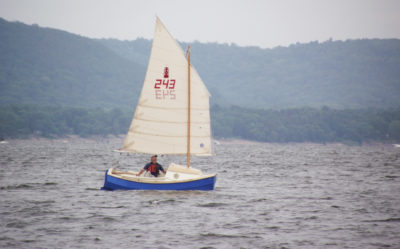
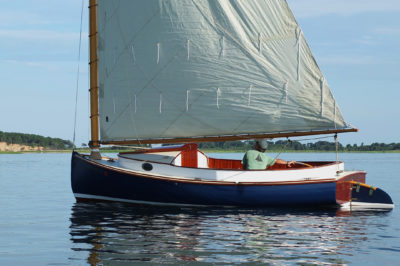

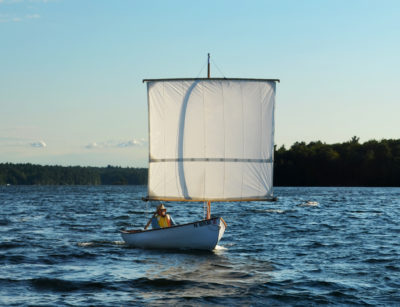
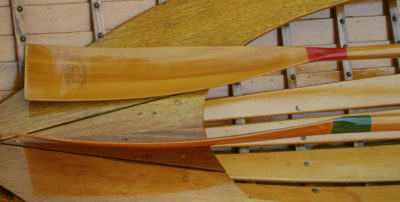
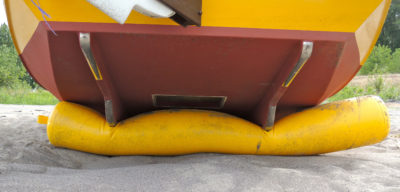
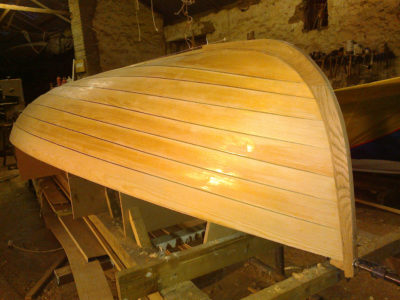

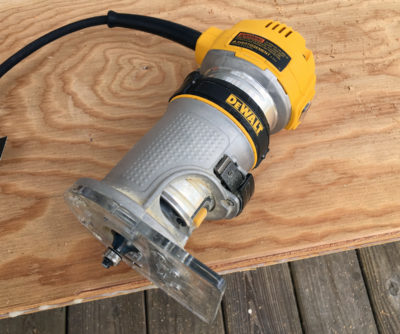
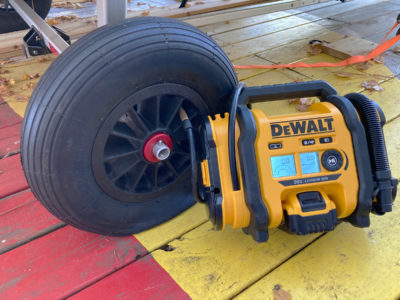
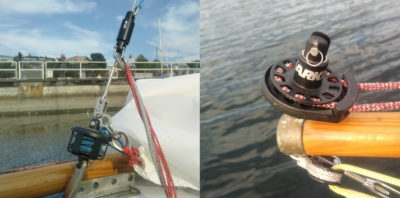
Very nice oars. I would like to know what kind of locks are used. I would also really like to see videos of the Doryman’s stroke and the Thames Waterman’s stroke, with some details on the finer points.
I used three locks (from left to right below): oval oarlocks supplied by Grapeview Point Boat Works and large and small horned locks that I normally use with my Whitehall.
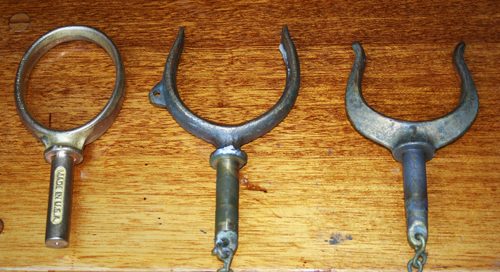
GPBW notes on their web site: “Unlike conventional round or horn-style oarlocks, the elliptical shape stays in constant motion with the oar. The oar has plenty of range of motion available in the major axis of the ellipse, yet the oar nestles against the minor axis. This eliminates the lost motion that can create a loose, sloppy feel when rowing.”
With all three, the oar slides up in the lock during the drive until it bears on the forward side of the lock (where the tangent is vertical), then slides back down at the finish. With the oval locks the oar makes contact with two points at the bottom of the lock (the oar bridges the smaller curve of the oval) and the lock travels with the oar during the recovery. That does indeed eliminate the “loose, sloppy feel.”
The large horned locks have a circular shape and throughout the stroke the oar has only a single point of contact. It sweeps through part of the recovery before bringing the lock along with it. In spite of that, the lock doesn’t feel loose and sloppy.
The small locks have a horizontal elliptical shape and the oar slides across the bottom during the recovery and then fetches up against the aft horn. At the catch it slide forward again an hits the forward horn. That does feel loose, and there is a bit of the “thunk” you get at the ends of the stroke when rowing tholepins.
The descriptions of the Waterman’s stroke and the dory stroke are in the two articles I wrote for WoodenBoat but videos would be a useful addition. I’ll get to work on them. The short clip included here with the review is largely the Waterman’s stroke as I learned it from my father, who was coached at Harvard by Bert Haines, once a professional sculler in England. At the catch you can see the blade come off the feather as it enters the water, not before, and at the release the blade emerges from the water already back on the feather.
I have several pairs of Tom’s oars, as well as a couple of his boats, and I have no trouble saying that his oars, like everything else he builds, is absolutely first rate. These are far and away the nicest oars I’ve ever used. The oval oarlocks work well as advertised. Plus Tom and his wife Susanne are delightful folks who are pleasure to do business with.
Boy, does this make me want to go rowing in my Whitehall with really good oars! Having really good technique would be nice too, of course.